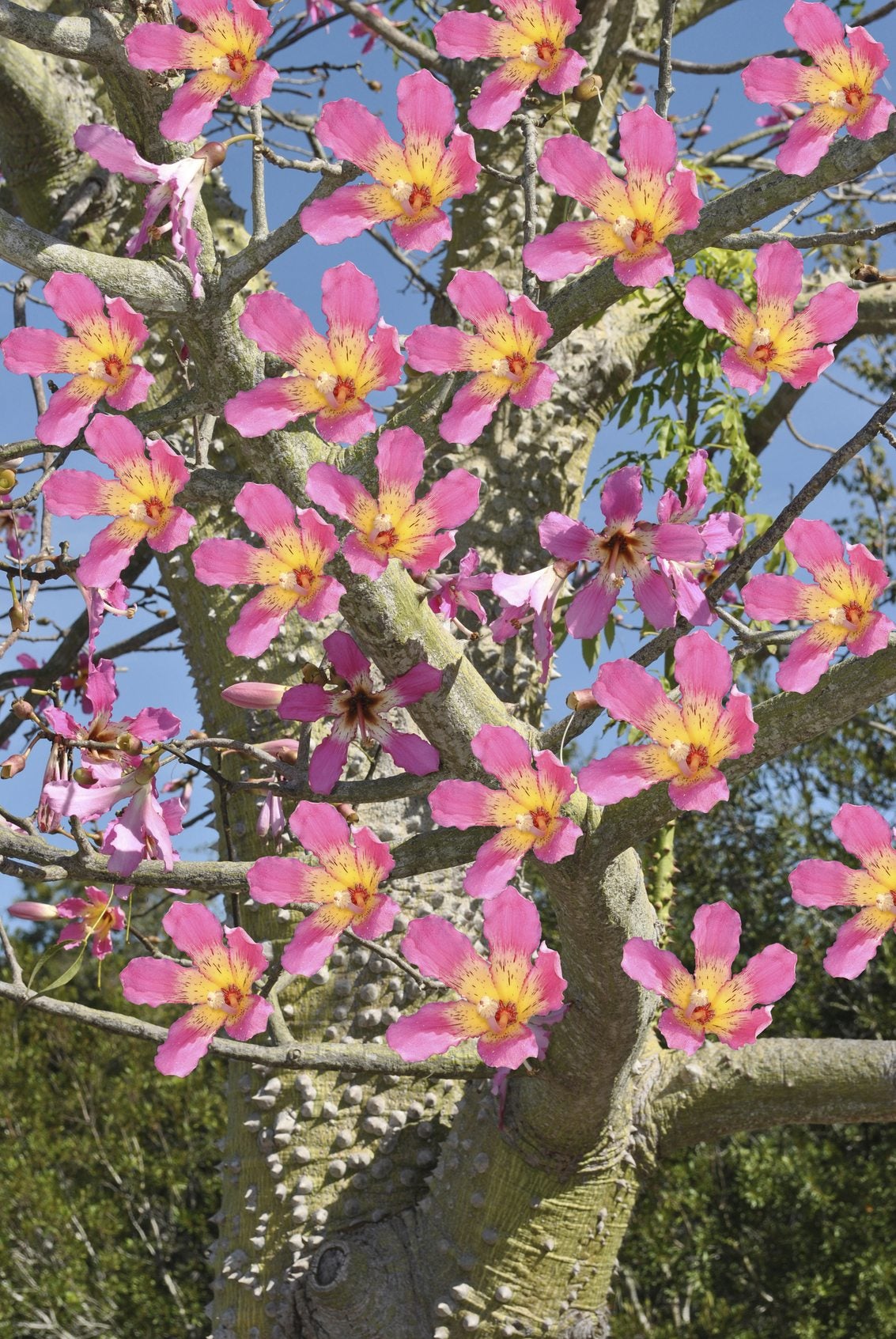About Floss Silk Trees: Tips For Planting A Silk Floss Tree

Silk floss tree, or floss silk tree, whichever the correct name, this specimen has superb showy qualities. This deciduous tree is a true stunner and has the potential to attain a height of over 50 feet (15 cm.) with an equal spread. Growing silk floss trees are found in their native tropics of Brazil and Argentina.
About Floss Silk Trees
Known almost interchangeably as silk floss tree or floss silk tree, this beauty may also be referred to as Kapok tree and is in the family of Bombacaceae (Ceiba speciosa - formerly Chorisia speciosa). The floss silk tree crown is uniform with green limbs branching upon which round palmate leaves form. Growing silk floss trees have a thick green trunk, slightly bulging at maturity and peppered with thorns. During the autumn months (October-November), the tree bares lovely funnel-shaped pink flowers that completely cover the canopy, followed by woody pear-shaped, 8-inch (20 cm.) seed pods (fruit) containing silken “floss” entrenched with pea-sized seeds. At one time, this floss was used to pad life jackets and pillows, while thin strips of floss silk's bark were used to make rope. Initially, a fast grower, floss silk trees growth slows as it matures. Silk floss trees are useful along highway or median paving strips, residential streets, as specimen plants, or as shade trees on larger properties. The tree's growth can be curtailed when used as a container plant or bonsai.
Care of Silk Floss Tree
When planting a silk floss tree, care should be taken to situate at least 15 feet (4.5 m.) away from the eaves to account for growth and well away from foot traffic and play areas due to the thorny trunk. Floss silk tree care is possible in USDA zones 9-11, as saplings are frost sensitive, but mature trees can withstand temps to 20 F. (-6 C.) for limited time periods. Planting a silk floss tree should occur in full to part sun in well-drained, moist, fertile soil. Care of silk floss trees should include moderate irrigation with a reduction in the winter. Transplants are readily available in climate-suitable areas or seeds can be sown from spring to early summer. When planting a silk floss tree, the eventual size should be kept in mind, as leaf drop and fruit pod detritus can be hard on lawnmowers. Floss silk trees are also often affected by scale insects.
Gardening tips, videos, info and more delivered right to your inbox!
Sign up for the Gardening Know How newsletter today and receive a free copy of our e-book "How to Grow Delicious Tomatoes".

Amy Grant has been gardening for 30 years and writing for 15. A professional chef and caterer, Amy's area of expertise is culinary gardening.
-
 Looking For Plants To Give You The Soft And Fuzzies? Try These 5 Fuzzy Leaf Plant Options
Looking For Plants To Give You The Soft And Fuzzies? Try These 5 Fuzzy Leaf Plant OptionsLovers of texture, drama, silver foliage and tactile plants will adore these special sensory garden additions. These fuzzy leaf plant options will leave you all aglow
By Susan Albert
-
 Get Ready For A Summer Of Hummers! Grow These Full Sun Hummingbird Plants and Flowers
Get Ready For A Summer Of Hummers! Grow These Full Sun Hummingbird Plants and FlowersIf you’re lucky enough to enjoy a sunny backyard, make sure you are maxing out on your pollinator opportunities and grow these full sun hummingbird plants and flowers
By Tonya Barnett
